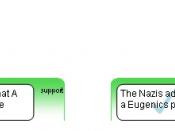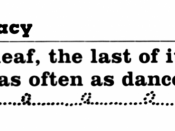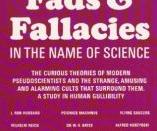Intellectual Kung-Fu
Introduction
All of us have heard, read, and even used logical fallacies in arguing our viewpoints. Actually, some of the best politicians and philosophers have developed the skills to recognize and use logical fallacies to their advantage. Therefore, it is important as students and citizens that we study and become familiar with these tactics so we can think logically, form opinions, and properly make decisions.
Dr. Labossiere (1995) describes a fallacy as an error in reasoning. This does not necessarily mean the facts are wrong, but the premises do not support the conclusion and eventually leads to an erroneous argument. Fallacies are statements that might sound sensible or on the surface true but are actually flawed, dishonest, or misleading. As readers and listeners detect them, logical fallacies can backfire and make the audience think the writer is deceptive or unintelligent. Therefore, it is important to avoid fallacies in our own arguments and be able to spot them in others to prevent being misled by false reasoning.
As Dr. Wheeler states (2005), "Think of this as intellectual kung-fu: the art of self-defense in a debate."
There are many known fallacies that students need to learn to master the art of debating. Ad hominem or Attacking the Person and Two Wrongs Make a Right are the two fallacy examples that are common in society that will be discussed.
Ad hominem or Attacking the Person
An ad hominem argument or attacking the person is defined by the staff at wikipedia (n.d.) as a logical fallacy that involves replying to an argument by attacking the person presenting the argument rather than the argument itself.
A (fallacious) ad hominem argument has the basic form:
- A makes claim B;
- There is something disagreeable about A,
- Therefore claim B is false.
This type of fallacy can be categorized as abusive. A personal attack is committed when a person substitutes abusive remarks for evidence when attacking another person's claims. This line of analysis is fallacious because the attack is directed at the person making the claim and not the claim itself. True debate occurs when the claim is independent of the person making the claim.
Examples of Attacking the Person
- Joe claims that Sally would make a good manager
- However I find Joe's alcohol addiction intolerable
- Therefore, I am not going to consider Sally for the promotion
In the above example, I am using and attacking Joe's behavior for my decision concerning Sally's promotion. Joe's addiction should have no bearing on Sally's career.
- Joe claims that the Congressman's economic plan is unrealistic
- I respect Joe because he is a CPA
- Therefore, I am not going to vote for the economic proposal
In this example, I am incorrectly using Joe's credentials to determine my opinion on the economic plan. This common type of fallacy is praising people who make an argument. Although I may use Joe's opinion, the economic plan should stand-alone and not depend on Joe's education.
It must be noted that not all Ad hominems are false. In some cases, an individual's character can bring validity to the claim. If it is proven the person bringing the claim is a pathological liar, then what he or she says can be considered unreliable. But remember, even pathological liars speak the truth sometimes. Therefore, it is important to focus the attention on the claim on not on who made the claim.
Two Wrongs Make a Right
Two wrongs make a right is a logical fallacy when it is assumed that if one wrong is committed, another wrong is acceptable or will cancel it out. Dr. Michael C. Labossiere (1995) defines the fallacy in which a person "justifies" an action against a person by asserting that the person would do the same thing to him or her.
A (fallacious) Two wrongs make a right argument has the basic form:
- It is claimed that person B would do X to person A.
- It is acceptable for person A to do X to person B.
This sort of reasoning is fallacious because an action that is wrong is wrong even if another person would also do it.
Examples of Two Wrongs Make a Right
- Ben forgot to return his next-door neighbors lawn mower.
- Ben tells himself that it is OK because his neighbor would not return his.
In this example, obviously it does not make logical sense that Ben should not return the lawn mower just because he thinks his neighbor would do the same.
Children use this fallacy many times while growing up.
- Parent: Grant, why did you punch your little sister in the nose?
- Grant: Because she called me a dork first!
In this example, Grant's argument was weak because his sister's actions did not justify his actions.
Conclusion
Skillful logical thinking requires anyone to understand fallacies and errors in reasoning.
It is imperative in decision making to not only know the facts but to be able to recognize logical fallacies. Everyday arguments and debates are filled with fallacies that one must be aware of or risk making poor judgments and forming wrong opinions. As mentioned earlier, one must master the intellectual Kung-Fu: the art of self-defense in a debate.
References:
Labossiere, M.C. (1995) Descriptions of Fallacies. Retrieved December 11, 2005 from http://www.nizkor.org/features/fallacies.
Wheeler, L.K. (2005, November 29) Logical Fallacies Handlist. Retrieved December 11, 2005 from http://web.cn.edu/kwheeler/fallacies_list.html.
Wikipedia (n.d.) Logical Fallacies. Retrieved December 11, 2005 from http://en.wikipedia.org/wiki/Logicial_fallacy.


